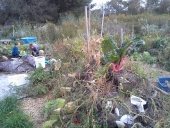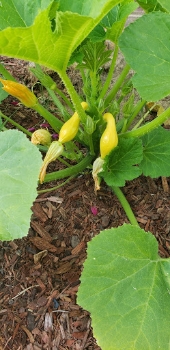
 4
4




Standing on the shoulders of giants. Giants with dirt under their nails
 1
1




Standing on the shoulders of giants. Giants with dirt under their nails
 2
2




Standing on the shoulders of giants. Giants with dirt under their nails
 2
2




 2
2




Denise Cares wrote:When burning in a pit has anyone encountered a danger with igniting tree roots which continue burning underground and potentially starting an escaped fire? In the woods where I live there are many tree roots buried at various levels no matter how far I dig down.




Invasive plants are Earth's way of insisting we notice her medicines. Stephen Herrod Buhner
Everyone learns what works by learning what doesn't work. Stephen Herrod Buhner
 2
2




Anne Miller wrote:Denise, my first thought was, will using these holes with tree roots damage the trees?




Invasive plants are Earth's way of insisting we notice her medicines. Stephen Herrod Buhner
Everyone learns what works by learning what doesn't work. Stephen Herrod Buhner




Check out Redhawk's soil series: https://permies.com/wiki/redhawk-soil








This is all just my opinion based on a flawed memory


|
Be the Mr. Rogers of your neighborhood. This tiny ad will help you:
Support permies and give beautiful gifts to gardeners: permaculture playing cards.
https://gardener-gift.com/
|







